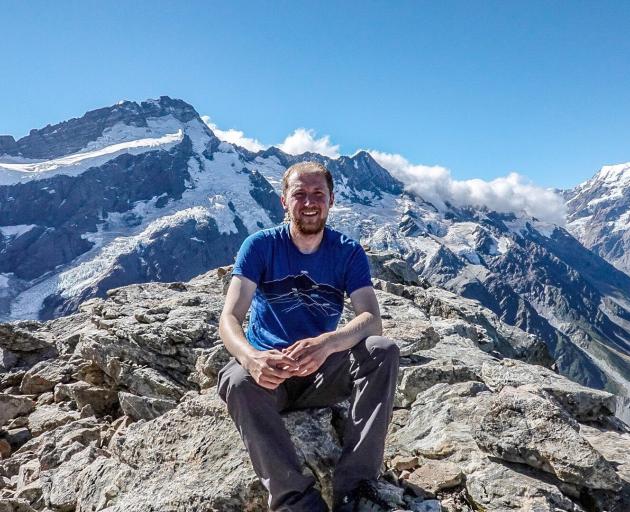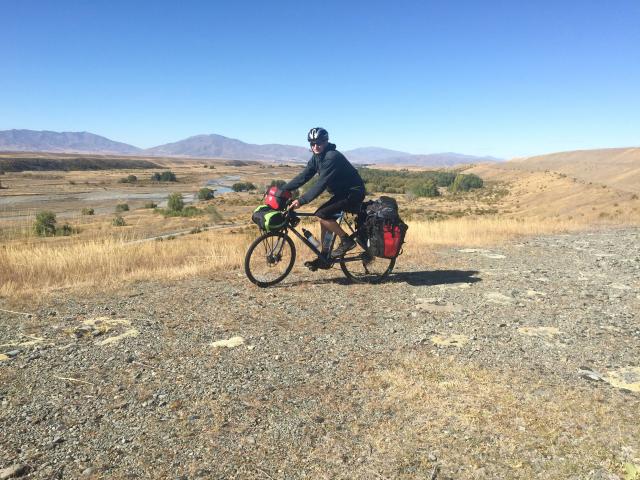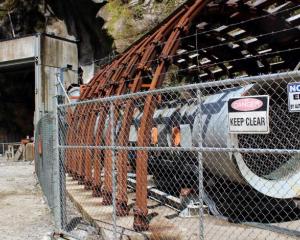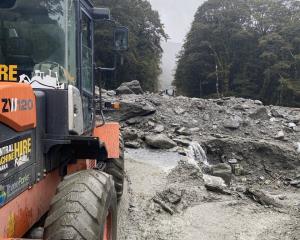
Tourists have no way of escaping the safe-driving message this summer.
The backs of buses and trucks, roadside billboards, petrol stations and airports, and even toilet walls have been plastered with tips on how tourists should adapt to New Zealand driving conditions.

The project is being run by the NZ Transport Agency (NZTA) and director regional relationships for the South Island Jim Harland, said last week it was designed to ensure visitors had a safe and enjoyable holiday experience.
Part of the work between now and March will be to collect tourist data from credit card use, the international visitor survey and face-to-face interviews.
Mr Harland said it was hoped hundreds of tourists would be spoken to, some in their native Mandarin, at tourist stops like the entrance to the Homer Tunnel, on the road to Milford Sound.

"It's all part of trying to understand from the users' point of view what they see, and then we can use that to help target further messages and so on in the future."
Previous work has indicated New Zealand roads are generally what tourists expect, except for state highways where tourists from developed countries have noted the lack of "divided carriageways" and median barriers.
Mr Harland said there had been a lot of effort put into the "imaging" of messages directed towards tourists "so that people have an expectation that they will find slower roads than what they are used to and more challenging roads".
Of tourists coming to New Zealand, 71% are from China, Australia, Germany, India, the United Kingdom and the United States, and Mr Harland said tourists from those countries accounted for about 57% of overseas licence holders involved in crashes.
While the highest number of crashes involving foreign drivers was in Auckland, Westland and the Queenstown-Lakes region had the highest percentage of crashes involving an overseas driver.
Mr Harland said it was because of those statistics, "significant" safety improvements had been made to roads on the West Coast and in the South, including extra rumble strips, keep-left arrows, and guard rails.
Billboards have also now been placed in the Gibbston valley, Lindis Pass area and north of Alexandra.
The visitor drivers project began in 2014, and an evaluation for ACC and NZTA in May found it had "substantially delivered", noting the number of deaths and serious injuries among visiting drivers had "remained relatively stable, despite a sustained increase in tourism volumes".
Mr Harland said in 1995 there were 27 fatal crashes in New Zealand involving a foreign licence holder and in 2017 the number was 34.

"But in the meantime, we have had more than a doubling of visitor arrivals and if you look at that 34 figure, 23 ... were involved and not necessarily at fault."
ON YA BIKE
Adding to the clutter on New Zealand roads each summer are thousands of cycle tourists wobbling along the fog line. It is an economical way to see the country, but how safe do they feel? We put that question to a handful of those who passed through Wanaka earlier this year.
Bettina and Volkmar Fuhg (both 56), from Minden, Germany
Mr and Mrs Fuhg started in Picton, included the Alps2Ocean Trail between Mt Cook and Oamaru, and the Otago Central Rail Trail, and covered 50 to 60km each day for a total trip of 2200km.
Their worst experiences were with "an angry truck driver" near Lake Tekapo who said the road belonged to car drivers and not to bicycles, and at the long, narrow Rakaia bridge in Mid Canterbury, where some drivers signalled they should find another way across the river.
"Furthermore, a lot of car drivers and trucks do not follow the 1.5m distance rule."
The couple felt the Government "should start a campaign acknowledging bicycles were part of the traffic like any other vehicle and encouraging overtaking to be "handled with care".
"One example was when we were near Cromwell, a truck overtook us with a maximum of 50cm [clearance].
"On his back was a big sign saying: `Pass with care'.
"This guy is not following the same rule."
The couple found gravel cycle trails did not suit their touring bikes, and they believed there was a need for a trail with a good surface between Blenheim and Dunedin.
Alexandre Kegle (37), from Canada
Mr Kegle was circumnavigating both the North and South islands at a rate of 120-170km per day.
His best experience was riding by moonlight, albeit with the help of a good bike light.
Cycling in New Zealand was his first experience of travelling on the left-hand side of the road, and he spent several days walking in Auckland, before beginning his trip, to get a sense of the traffic.
"Then I started riding and it was OK after a few hours of nervousness.
"I did the crucial mistake one time.
"At the end of the day, when you start being tired, I crossed a highway and looked the wrong side.
"A car driver [hit] the brakes and literally saved my life.
"After that, let me tell you, you feel very bad to yourself."
Mr Kegle said cyclists in Europe stayed on the road "even if a truck is coming full speed behind them".
"I don't do this.
"Every single time I know or suspect a vehicle is approaching, I pull myself out of the way, specially for truckers.
"I would even ... stop completely.
"I think that if you don't have enough skills and aptitude to ride on the grass and on the gravel ditch on the side of the road, you shouldn't be riding the highways."
Herman Gorbatovskii (29) from Australia
Mr Gorbatovskii was on a 4000km trip around New Zealand, travelling at a rate of between 25km and 150km per day.
His three best experiences were cycling from Westport to Wanaka, to Mt Cook and Queen Charlotte Drive in the Marlborough Sounds.
His worst experiences were between Geraldine and Tekapo.
"There's a decent shoulder in parts but the car rentals and camper vans would never give you any room.
"A camper van that was lane surfing almost took me out.
"It came probably within 10cm of my handlebars."
He also had unpleasant memories of his ride on the busy, narrow Queenstown to Cromwell road.
"A lot of cycle tourists I met pointed out the lack of a decent shoulder to cycle on compared to other countries they've been.
"I've also noticed a lack of billboards on certain roads which would normally ask motorists to drive carefully, slow down or to watch for cyclists.
"New Zealand is a great touring experience and that's why I keep coming back.
"I've been offered food, water, free accommodation and to have me and the bike driven to the nearest town while I was stuck in heavy rain.
"When people here see you attempting to ride across the entire country they will go out of their way to help you."

Mr Donni averaged 55km per day for 50 days and found the "most beautiful" sections were from Walter Peak to Te Anau, from Tekapo to Mt Cook and from Picton to Nelson.
"And the New Zealanders are very friendly and helpful.
"The trucks overtake very dangerously.
"Worst for me were the wood trucks from Blenheim to Picton.
"Almost all of them overtook at life-threatening high speed and with almost no distance to me.
"And what I noticed, especially in the north of the South Island, are large amounts of rubbish next to the road.
"Many dead animals are lying on the road which have to be avoided.
"It was a lot of fun to travel New Zealand by bike.
"I saw a lot and would do it again."












